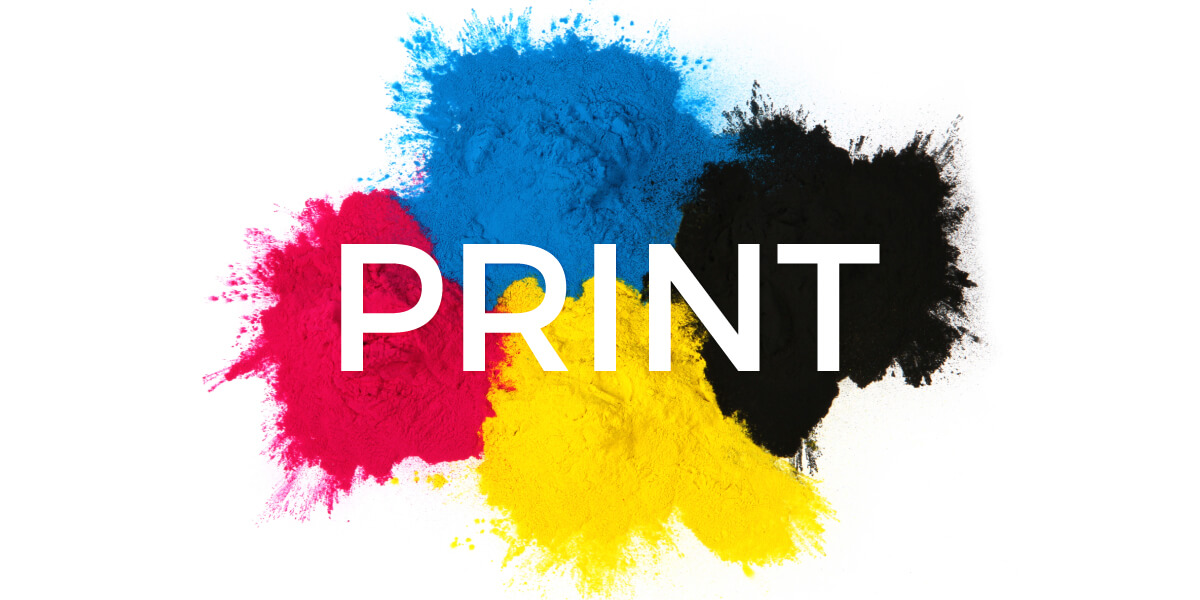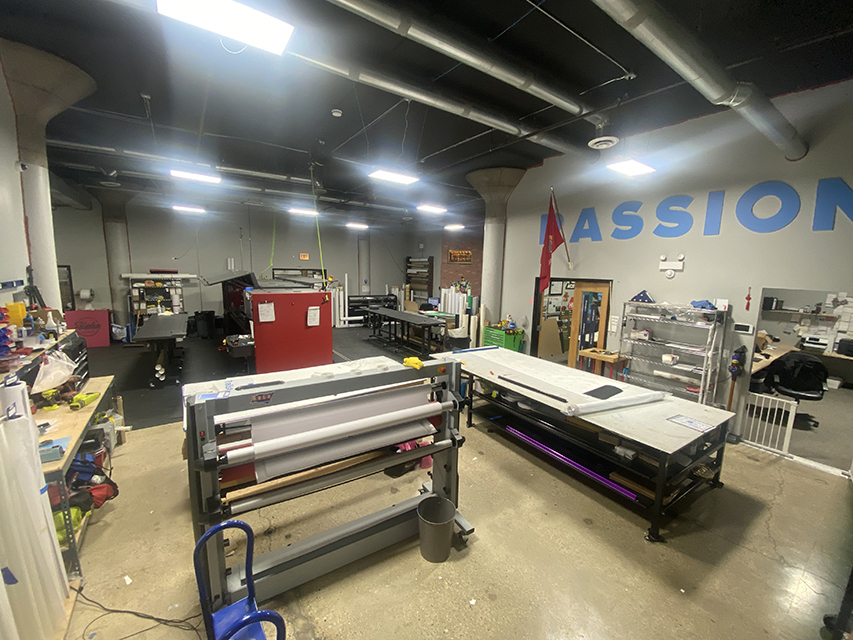The Ultimate Guide to Utilizing Printing Services for Custom-made Art Prints
Steering via the globe of customized art prints calls for a clear understanding of different printing services. Musicians should consider aspects such as printing strategies and products to achieve the preferred end result. Each decision, from artwork preparation to color calibration, plays an important duty in the end product. As they explore these components, artists can expose the possibility for their work to attach with audiences in a significant way. What steps can they require to guarantee their prints stick out?
Understanding Different Kinds of Printing Services
Several people may ignore the details of printing services, recognizing the different kinds readily available is essential for anybody looking to create custom-made art prints. One of the most usual kinds consist of electronic printing, balance out printing, and display printing. Digital printing is preferred for its quick turn-around and capacity to generate top quality pictures straight from electronic documents, making it ideal for small runs. On the other hand, offset printing deals remarkable photo top quality and is cost-efficient for bigger amounts, making use of plates to move ink onto paper. Display printing, usually made use of for fabrics and advertising things, entails pressing ink through a mesh screen, allowing for vibrant shades and appearances. Each method has its distinct advantages and constraints, making it essential for musicians and designers to evaluate their details requirements, such as amount, wanted high quality, and budget, prior to picking a printing service that straightens with their creative vision.
Selecting the Right Materials for Your Prints
Selecting the suitable products is important for attaining high-quality custom-made art prints. Comprehending the different sorts of paper and the value of ink quality can greatly influence the result. Musicians have to consider these aspects to guarantee their vision is accurately stood for in the published item.
Paper Kind Explained
Picking the best paper type is vital for accomplishing the desired visual and toughness in custom art prints. Various options exist, each offering distinct attributes. Glossy paper improves shade vibrancy and detail, making it optimal for photography prints. Conversely, matte paper provides a softer surface, which is preferable for artwork that requires nuance and appearance. Great art paper, typically made from cotton or alpha cellulose, uses archival quality and appropriates for replicating intricate details in paints (Print Shop Near Me). Additionally, specialized documents, such as watercolor or canvas, can add distinct visual results. Inevitably, choosing the suitable paper kind will significantly affect the last presentation, guaranteeing that the art work is both long-lasting and aesthetically enticing
Ink Quality Issues
Ink quality plays a necessary role in the overall success of custom-made art prints. High-grade inks ensure lively shades, sharp details, and durability, which are important for showcasing creative work. When choosing printing solutions, artists should take into consideration pigment-based inks over dye-based options, as they use far better fade resistance and shade security. Additionally, the option of ink need to complement the chosen paper kind, boosting the print's visual effect. Ecological variables, such as humidity and temperature, can additionally influence ink efficiency; for that reason, musicians need to make inquiries concerning ink formulas that resist these components. Ultimately, buying exceptional ink high quality can boost the end product, assuring that the art print continues to be true to the artist's vision for years ahead.
Discovering Printing Techniques: Digital vs. Conventional
While both digital and conventional printing strategies have their one-of-a-kind benefits, the choice on which approach to make use of often depends upon the specific requirements of the artwork. Digital printing masters versatility and rate, permitting fast turn-around times and the capability to print on demand. This method is especially valuable for artists that need small runs or one-of-a-kind pieces, as it gets rid of the requirement for comprehensive setup processes.Conversely, traditional printing strategies, such as lithography and screen printing, typically create richer textures and shades, attracting musicians seeking a more genuine and tactile finish. These techniques can boost the depth and top quality of the art work, making them suitable for bigger editions. Furthermore, conventional methods might offer an unique aesthetic that electronic printing in some cases battles to duplicate. Inevitably, the option between these methods need to think about elements like preferred top quality, quantity, and creative intent, leading artists to one of the most suitable option for their jobs.

Preparing Your Art Work for Printing
Efficiently preparing artwork for printing needs cautious interest to information, despite the chosen printing technique. Artists must guarantee that their data are developed at the ideal resolution, generally 300 DPI, to maintain intensity and clearness. The right color setting, usually CMYK for print, is important to accomplish the desired color accuracy. Artists ought to likewise think about the dimensions of the artwork, ensuring to include bleed locations if necessary, to prevent any type of unwanted white edges after trimming.Additionally, data styles play an essential role; TIFF and PDF are frequently chosen for top notch prints. Before submission, it is very important to review the art work for any type of imperfections or unwanted components. By diligently inspecting these elements, musicians can boost the probability of their prints lining up with their creative vision, inevitably resulting in a successful printing end result.
The Relevance of Color Calibration and Proofing
Shade calibration and proofing are necessary action in the printing process, as they guarantee that the last outcome properly reflects the musician's vision. Appropriate shade calibration assurances that the colors presented on the screen look at this website suit those that will be published. This process entails changing the screen setups, printer profiles, and inks to attain a consistent shade representation.Additionally, proofing enables artists to preview their job before the last print run. This phase enables them to detect and remedy any inconsistencies in information, shade, or saturation, therefore lessening expensive mistakes. By using hard-copy or electronic proofs, musicians can make informed decisions regarding changes required for ideal results.Incorporating color calibration and proofing into the printing process not only improves the top quality of the last item but likewise fosters a trustworthy partnership in between the printing and the artist service, guaranteeing complete satisfaction and integrity to the initial art work.
Picking the Perfect Dimension and Layout for Your Prints

Advertising and marketing and Selling Your Personalized Art Prints
Advertising and marketing personalized art prints calls for a solid brand name identity to stand out in a competitive market. Effective online promotion approaches and the strategic usage of social media sites platforms can significantly improve visibility and engagement. By integrating these elements, artists can create an engaging existence that draws in potential buyers.
Building Your Brand Identity
Developing a solid brand name identity is necessary for artists seeking to effectively market and offer their custom art prints. This identification includes the artist's distinct style, worths, and story, which resonate with potential customers. Artists should develop a cohesive visual presence throughout all platforms, including logos, shade schemes, and typography that show their artistic vision. In addition, a clear goal declaration assists connect the artist's purpose and interest. Engaging narration regarding the helpful resources ideas behind each piece can cultivate emotional links with the target market. Uniformity in messaging, whether on social media or product packaging, boosts acknowledgment and trust fund. By thoroughly curating their brand identity, musicians can distinguish themselves in an open market, drawing in dedicated customers that value their creativity.
Reliable Online Promotion Methods
What strategies can artists employ to successfully advertise their customized art publishes online? Establishing a professional web site showcasing the art work is essential. This site needs to include high-grade images and in-depth descriptions to involve possible customers. Additionally, artists can make use of e-mail marketing by building a subscriber list to share updates, promotions, and new releases. Working together with blog writers and influencers in the art neighborhood can increase reach and reliability. Providing limited-time discount rates or special items can also create urgency, encouraging purchases. Additionally, enhancing content for search engines via relevant keyword phrases will boost exposure. Keeping a blog site regarding the imaginative procedure can draw in art lovers, promoting a deeper connection with the audience and boosting the general advertising and marketing approach.
Making Use Of Social Media Operatings Systems
Social media platforms work as effective tools for artists wanting to market and sell their personalized art prints. By leveraging systems like Instagram, Facebook, and Pinterest, artists can showcase their job to a vast audience. Involving visuals and tactical hashtags can enhance presence, attracting prospective buyers to their profiles. Regularly uploading web content, such as new designs or behind the curtain processes, assists preserve audience rate of interest and cultivates a feeling of area. In addition, musicians can make use of targeted advertising and marketing to reach specific demographics, improving the chances of sales. Collaborations with influencers or other musicians can even more enhance direct exposure. Eventually, a well-curated social media sites visibility not only advertises customized art prints however additionally develops a dedicated consumer base gradually.
Frequently Asked Concerns

Exactly how Do I Locate Reliable Printing Solution Providers?
To locate dependable printing provider, one need to look into on the internet reviews, seek referrals from peers, contrast portfolios, demand examples, and analyze client service responsiveness. This thorough method assurances informed choices and satisfying outcomes.
What Is the Common Turnaround Time for Custom Prints?
The regular turnaround time for customized prints differs by copyright, but normally varies from a few days to two weeks. Aspects affecting this consist of order dimension, complexity, and the certain printing methods made use of.
Can I Obtain a Reimbursement if I'm Not Satisfied With My Prints?
The concern of getting a reimbursement for poor prints frequently relies on the specific printing solution's plans. Many business use complete satisfaction guarantees, while others may have strict return conditions, emphasizing the importance of assessing terms ahead of time.
Exist Any Kind Of Hidden Costs Connected With Printing Services?
Many printing services might consist of surprise prices such as arrangement charges, shipping fees, or extra charges for specific products. It's crucial for consumers to inquire concerning all possible costs before finalizing their order.
How Can I Ensure My Prints Are Eco-friendly?
To guarantee prints are ecologically pleasant, one need to choose environment-friendly inks, recycled paper, and sustainable printing methods. Investigating printing services that focus on sustainability and acquiring certifications can even more assure marginal environmental impact in the printing procedure. Steering via the world of custom art prints calls for a clear understanding of various printing solutions. Several people might neglect the intricacies of printing solutions, comprehending the various kinds available is essential for any individual looking to create personalized art prints. The most typical kinds include electronic printing, balance out printing, and useful link display printing. Successfully preparing artwork for printing calls for cautious focus to detail, no matter of the picked printing technique. Prints intended at galleries might need common sizes to assist in framing, whereas unique styles might appeal to enthusiasts looking for something distinctive.Lastly, the printing service's capabilities need to be evaluated.